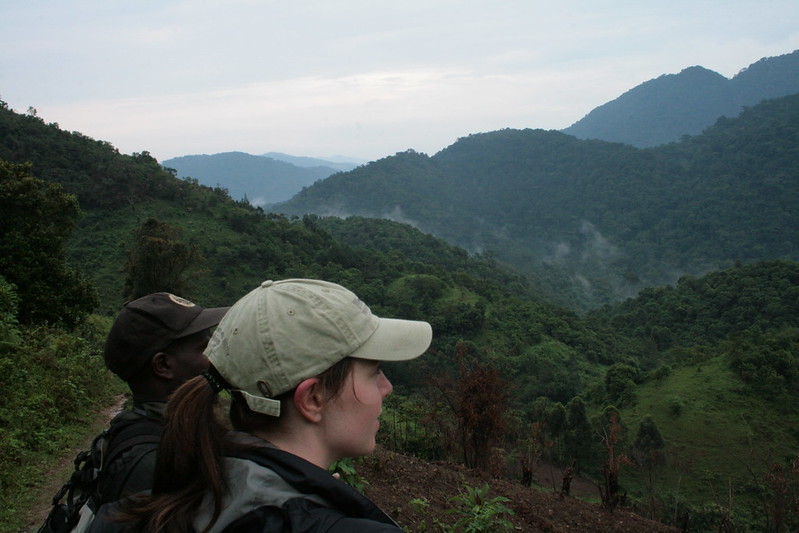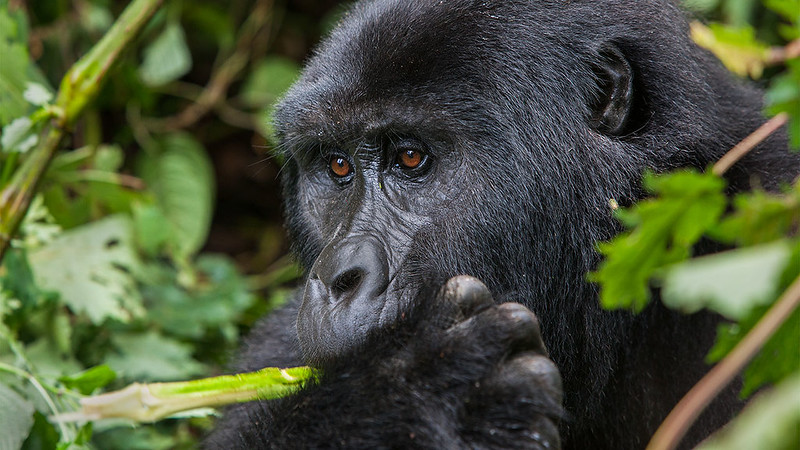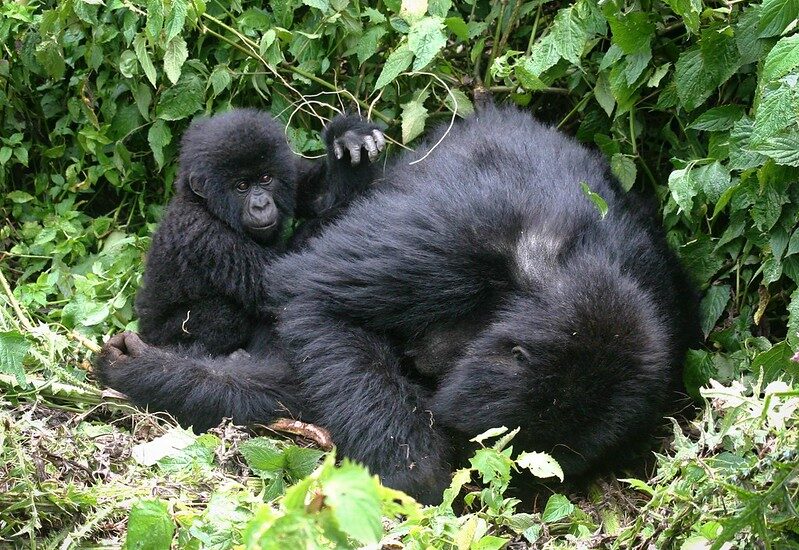Gorilla tracking permits for Nkuringo sector – Bwindi impenetrable National Park. You are currently sleeping…
CRATER LAKES IN UGANDA
Crater lakes were produced by volcanic activity 8000 years ago. A volcanic crater lake is a lake that developed as a result of a volcanic explosion. Uganda has several volcanic mountains, which cause eruptions. Unlike other volcanoes, which form cones at the summit of the mountain. These explosion craters spew lava, ash, and boulders into the surrounding surroundings, creating a vast basin in their wake.
These basins gradually fill with water, becoming the crater lakes we know today. Crater lakes provide stunning vistas and a lush green environment. The majority of these crater lakes may be located in western Uganda. Crater lakes may be visited and are excellent photographic locations.
Some of the craters are seen below:
Lake Katwe Crater
Lake Katwe is located at the highest point of the Mweya Peninsula’s Queen Elizabeth National Park. It is the major Crater Lake and Uganda’s primary salt distributor. It is 3,265 feet deep and, because to its saltiness, does not attract any aquatic creatures. Elephants, buffalos, and flamingos may be observed near the baboon cliff. Lake Katwe is a good place to halt on your trip to Queen Elizabeth National Park. Enjoy a panoramic view of the Rwenzori Mountains, Lake George and Lake Edward, as well as the Kazinga canal. Your trekking experience will be enhanced by the Katwe explosion craters. The trip to the top of the globe will take you to additional crater lakes via towns and tea gardens.
Craters of Ndali-Kasenda
These craters are among the few extinct volcanic landforms on the planet. Their volcanic fumes extend roughly 10 kilometers beneath the surface. The Lakes have a sulfurous odor and are distinguished by green hazardous water. This implies you shouldn’t leap into any Crater Lake water before determining if it’s safe to swim in it.
The famed ‘Top of the World’ crater path is a three-hour guided tour of the whole crater region. This path has a lot more to see and learn from your appointed guide. There are several crater lakes in the vicinity. Lake Nkuruba, Lake Lyantonde, Lake Nyabikere, Lake Nyinambuga, and Lake Kifuruka are among the lakes. This is a slice of heaven that most people have never seen. The spectacular vista of the Rwenzori Mountains, Kibale rain forest, and tea plantations will delight you.
Craters of Bunyaruguru
These are located on Queen Elizabeth National Park’s western side. Locals refer to the Kichwamba crater fields, which are located on the Kichwamba escarpment. These are located south of Lake George and include crater lakes with both saltwater and freshwater. Bunyaruguru features about 20 craters in the western rift valley’s Kichwamba escarpment. Bunyaruguru’s crater lakes are overgrown with vegetation. Lake Nkugute is filled with water and can be seen from the Kasese Mbarara highway. The Queen Elizabeth National Park Forest will be seen from Lake Nkugute. Lake Nkugute is located in Bunyaruguru County’s newly formed Rubirizi District. It is claimed to have taken on the form of Africa unexpectedly.
The name Nkugute was taken from a Runyaruguru term that means’swallow,’ as well as tales and ancient traditions that have been passed down for generations in the surrounding villages. Every year, a boy and a girl are thought to drown in the lake. As a result, the’swallow’ reference. There was no genuine evidence to back up this local legend.
Nkugute Crater Lake was generated as a result of volcanic activity in the Bunyaruguru Volcanic Field, as demonstrated by the Kitagata hot spring in Sheema.
The twin lakes of Kyema and Kamweru, Mirambi and Katinda, Nyungu and Rwizongo, Lake Nkuruba, Lake Mafuro, Kamweru and Kyema, and Lake Kamunzuku are among the other crater lakes in Bunyaruguru.
There are around 50 crater lakes in Uganda. Although some are salty and have a strong odor, there are several with freshwater and magnificent landscape. Any of the craters may be visited as part of a wildlife safari to the Queen Elizabeth or Kibale National Parks. The half-day trip to the craters is well worth your time and effort.


